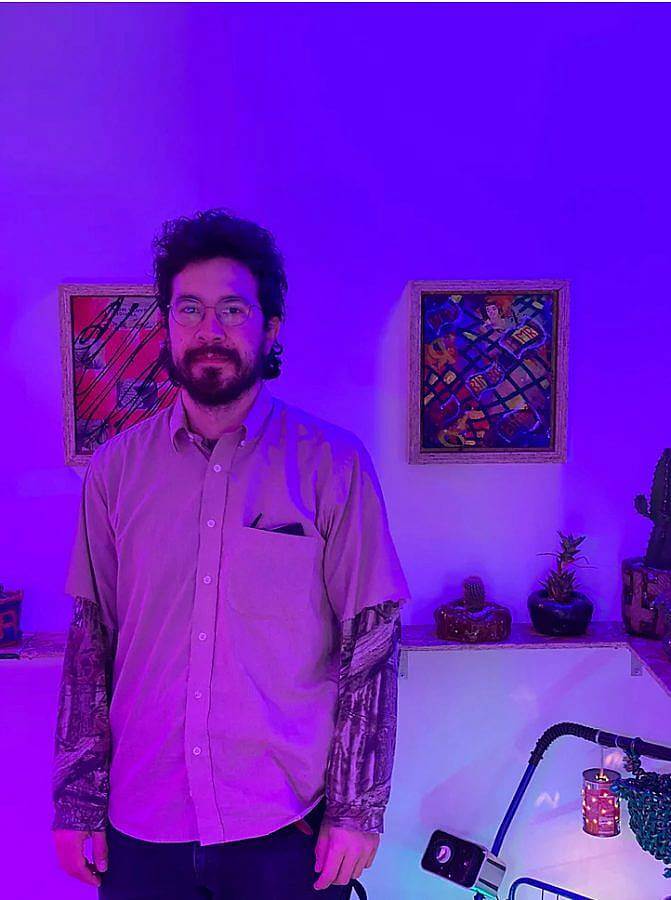Tell us a bit about yourself and what you do
My name is Bruno Smith, I’m an interdisciplinary artist born in New York City with roots in Mexico and South Texas. I have an interest in “culture” whether it be growing on rotting fruit, hanging in a gallery or museum, or embedded in the everyday consumer goods we purchase. From a suburban strip mall in New Jersey to a mercado in Mexico, I’m searching for my culture anywhere I go. My practice grapples with how our consumer habits leak into our construction of identity and search for authenticity.

Where do you find a lot of the objects you use in your pieces, and what do you look for when selecting them?
Most things come from thrifting, fleas, and novelty stores. I’m drawn to things that are either mimicking nature or have cultural significance to me. It can span from a Goya can, to a soccer ball, to driftwood that says “life’s a beach.” I also rescue cacti and succulents from large box stores/buy from small greenhouses (shout out to Edison flowershop) and incorporate found natural artifacts, such as rocks and shells. I also have fossils found in Big Brook Preserve in New Jersey—shark teeth and squid bones (calcite belemnite) from 64-74 million years old, which was the cretaceous period. I displayed them on a light box shelf in my thesis show. Their temporal magnitude felt like such a strong presence, just having them in the room was enough.
You have referred to your practice as a ‘post-modern take on painting’ – could you speak on that?
OOO! I’d love to see when I said that. I went to undergrad primarily for painting but never felt quite attached to paint on the surface. I was more interested in the history of textiles and what it would mean to “paint” with sewn fabrics. I would make quilts that mimicked abstract expressionist paintings, then stretch them, using the stretcher to anchor them in the lineage of painting. Once I started making my own stretchers their shapes became organic and eventually I was just putting sticks and fabrics loosely in my installations. So maybe my practice is less so a “post-modern take on painting” and more deconstructionist. Or paleo(lithic)? Recently I built a pool table. As much as my pool table is a sculpture for performance, I believe in essence it is also a painting. Creating the surface felt like stretching a canvas and the edges of the pool table work as a frame. As the colored balls play across the surface, it becomes an action painting.
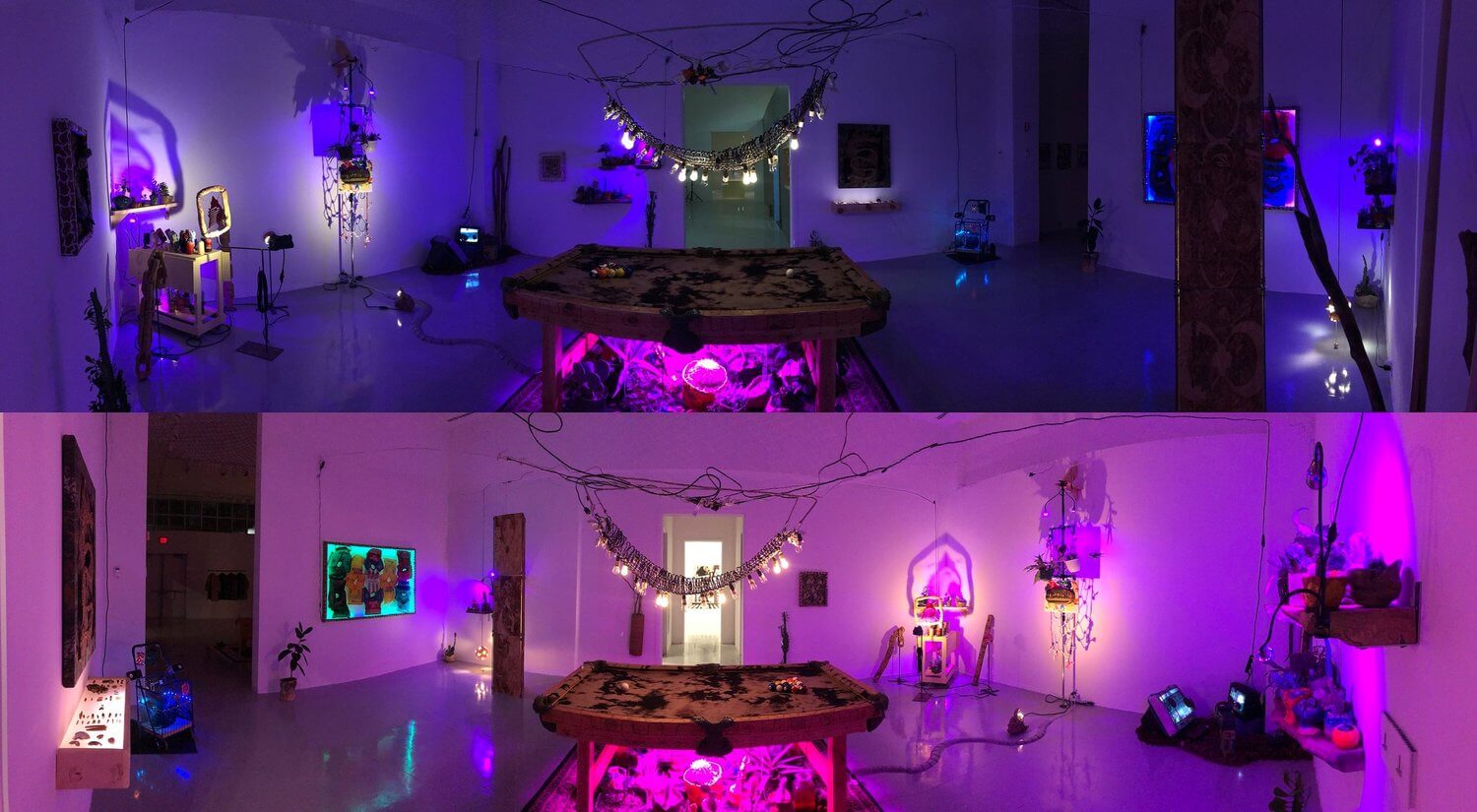
What do you have in consideration when titling work?
I love wordplay through mistranslation and engaging the viewer to search for the connection between seemingly disparate things. Growing up I would visit cousins in Mexico and we naturally fell into speaking Spanglish. We were able to choose which words were most efficient in which language. The rhythmic potential of a Spanish word in an English sentence or vice versa was readily understood without translation. In south Texas, where my father’s family lives, Spanglish seems to be the predominant unsanctioned language. These linguistic practices growing up have been formative for how I think about language in my own work. Conchalatas 2021 are cast aluminum and bronze seashell forms with an arm holding a beer can. “Concha” in Spanish means shell and “lata” means can but the words together mean bottle cap. Most often the titles are straight forward but there’s always potential for wordplay or poor translation, leading to a bottle cap being portrayed as a seashell holding a beer can. In the piece De Goya a Goya 2022, am I talking about Goya in the art historical sense or Goya as the can of beans? Ultimately, I’m talking about both and in doing so compressing their lineages.
What does your studio look like?
I used to see my studio as a factory full of machinery to make art. During the initial lockdown, it turned into a dirt-covered desert ecosystem where life had to be sustained—my own and those of all the desert plants I began amassing. In the isolation of the early of the pandemic I started asking: If I were the only point of reference, what would my environment look like? What history(s) do I contain? I started thinking a lot about deep time, ends of civilizations, and extinction, which led me back to my love for dinosaurs! Rawr.
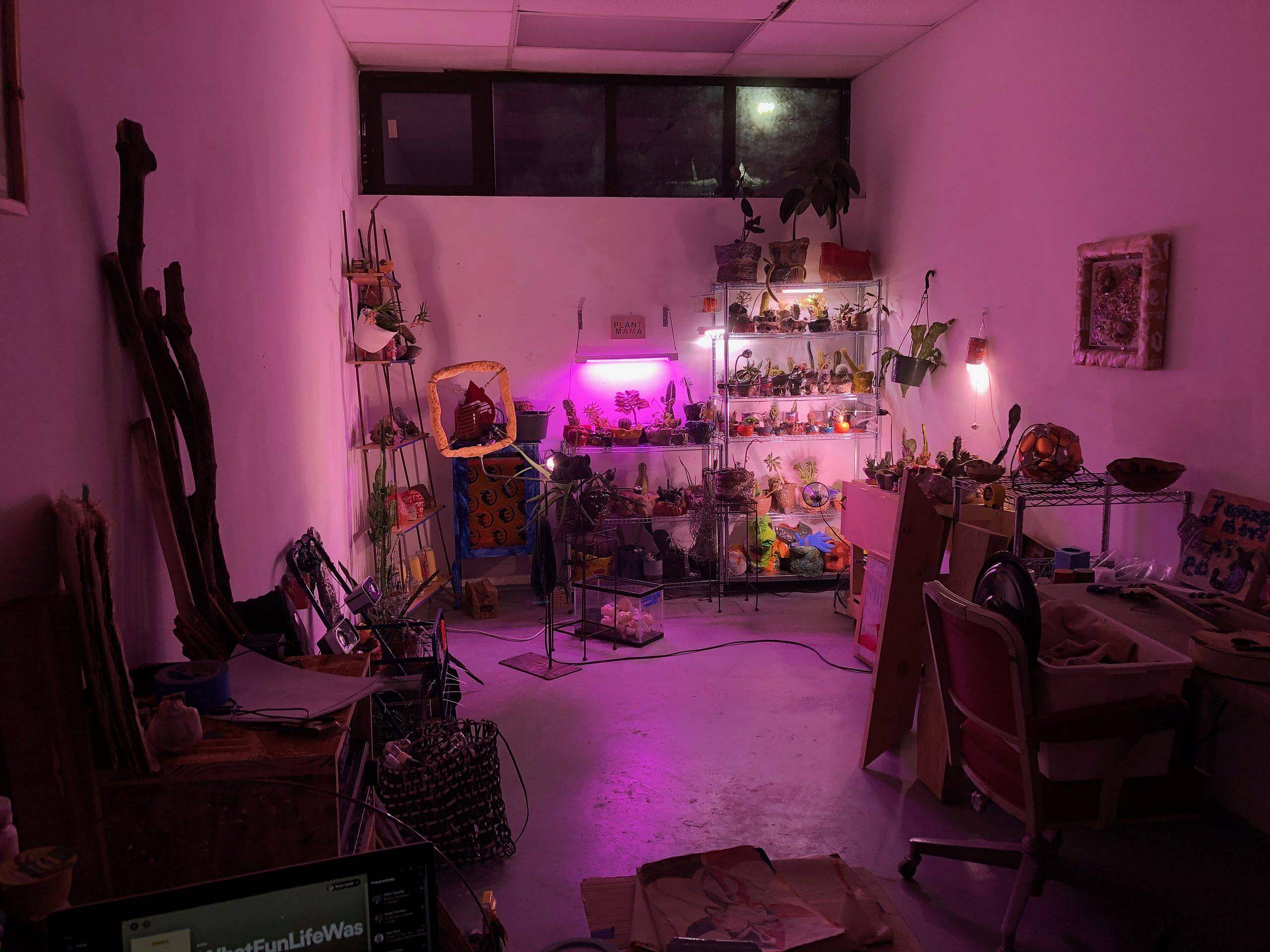
What was your MFA experience like?
It was very generative. I applied at a time when my work was beginning to shift away from universal connectivity to more personal work having to do with my identity. I wasn’t certain where exactly I wanted to begin or how to frame it and grad school offered me a lot of input. Many of the professors at Rutgers were very cognizant of the politics of identity in and out of art and I was blessed to be given such a vast reading list. Mason Gross is a teaching heavy program so the opportunity to have your own students is very enlightening. Growing up I never felt like I was a great student so having the opportunity to see myself as the teacher and find ways to meet students where they’re at was transformative. It also helped me a lot with my work. How can I make my work more approachable? As I grapple with ideas that I myself am uncertain of, can the viewer come along? How can education be multifaceted and beneficial to all involved?
What do logos do in your practice?
I see them as contemporary glyphs and a type of universal language. A logo is a pictorial symbol that absorbs anything it’s placed on, attaching (branding) individuals or regional sports team to a company. In 1967 Nike was about to release a trainer shoe called “The Aztec” in anticipation of the Mexico Olympic Games. But then Adidas threatened to sue Nike because Adidas already had a shoe called “Azteca Gold.” The owners of Nike decided to instead name the shoe “Cortez” after Hernán Cortés, the Spanish conquistador who violently conquered the Aztec people and annexed Tenochtitlan (now Mexico City). In the 80s the Cortez shoe became synonymous with Cholo culture in L.A. and was suddenly seen as a signifier of gang affiliation. By the 90s it was appropriated in the white mainstream (Seinfeld, Forrest Gump, Farrah Fawcett) as so many subculture aesthetics eventually are. Today they’re seen as iconic throwbacks as worn by characters in Stranger Things and Bella Hadid’s vintage ad campaign. Within all of this cultural brand building, how did Nike become the sole heir and financial beneficiary of it all? What is the connection between Nike and the history of colonization throughout Mesoamérica? I feel that logos are capable of holding so much information and power. I sometimes feel overwhelmed by how to represent all of this at once. It feels impossible to tackle every aspect of a symbol but I try to meditate on them, hope something gets through, and try to at least open a symbol up and not just become passive to it.
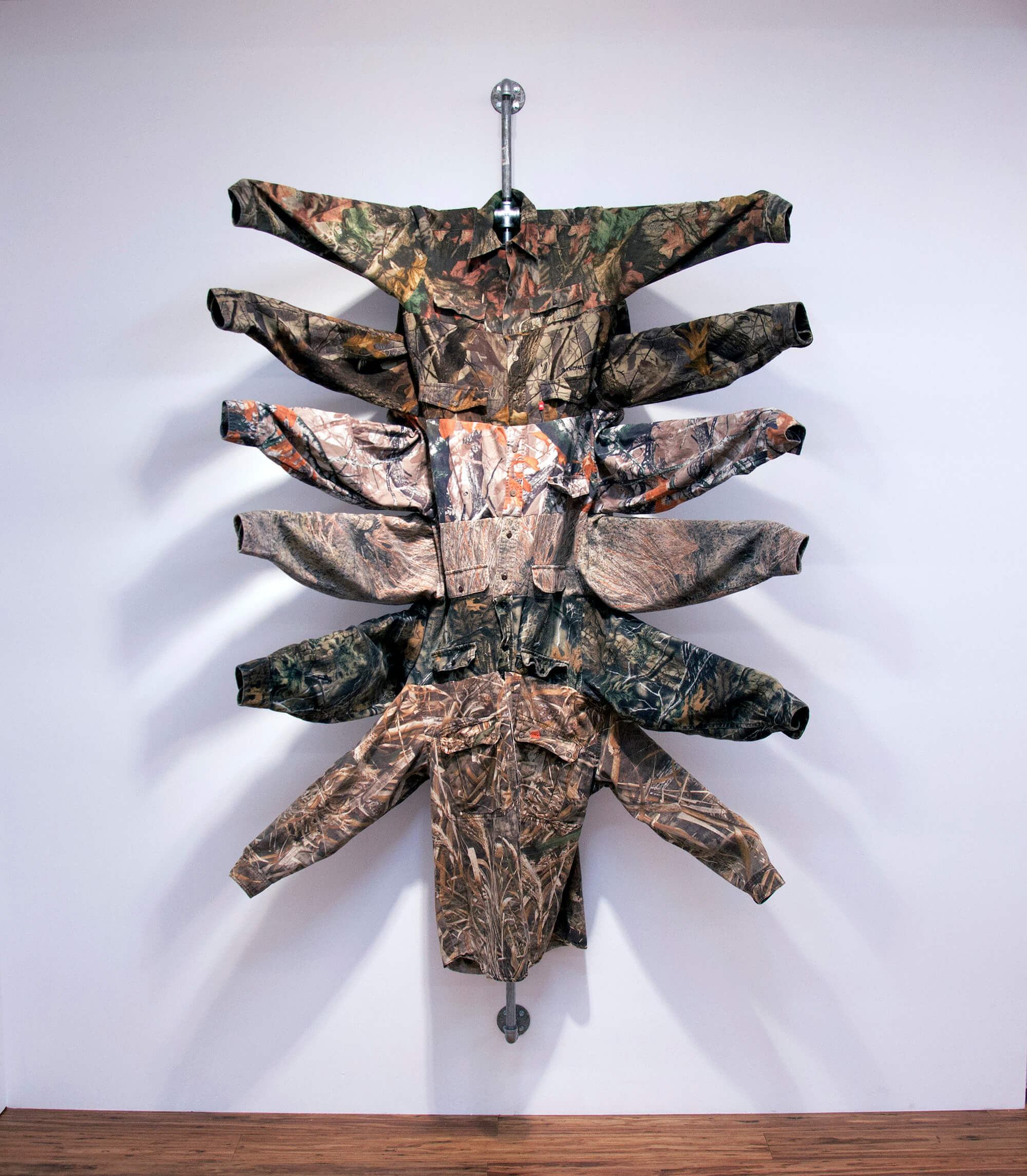
How do you feel about the functionality of some of the objects you have made, such as candles, ceramic pots with plants, and a full pool table?
I try to confront the reality that the art market is ultimately an exchange of high end goods. The process of making art can feel futile within that system. How can we expect to make unique functionless objects as the world seems to be falling apart, in large part because of consumer capitalism? I cannot separate art from the reality of the art market. In this context, Function feels like a form of survival, that art can be a means of building a world you want to live in. It may be the only thing I can truly take control of, or care for. The potted plants force me, and whoever purchases the piece, to care for a living being. I enjoy the tension of what happens when the plant dies. Is the performance piece over? If it outgrows the pot and needs to be transplanted, is it still the original authored work. Once I was caring for cacti, I needed to make fixtures for grow lights. More recently I’ve made a solar panel to try to create a self-sustaining practice. It’s a work in progress but it feels like a method of diverting my attention away from the art market and towards making things out of necessity and sustainability.
Any standout shows you’ve been to recently?
Michele Gabriele at ASHES/ASHES, Daniel Lie at New museum, Faith Ringgold retrospective, Guadalupe Maravilla at Brooklyn Museum, Cameron Welch at Yossi Milo, Raphael Ortiz at Museo del Barrio, Pooneh Maghazehe at Brennan Griffin
What drew you to making candles?
I had been thinking a lot about intimacy and ephemerality in art. The pre-vaccine period had me thinking a lot about how soft structures are and how quickly something can burn away or dissolve. Like the potted plants, there is a playful relationship to value. If the buyer does not burn the candle, then it will never fulfill its function. Yet if you do burn the candle, your asset is literally liquidated and the artwork disappears. There is no wrong decision or valuation, just a dilemma of personal choice. Ultimately, I love that candles were once humans’ shared light source dating back to 3000 BCE (or earlier) and are now reduced to a soothing aromatic mood light thats sets a “chill vibe.”
What is your studio workflow like?
A mess. It can be hours staring and touching my succulents, drawing the first movie character that comes to mind. Rabbit holes on my computer (phone) going down etymologies of words or companies wikipedia pages and finding connections between two symbols that, to me, need to be smashed. Sometimes I have to sweep up a lot of dirt off the ground but I mostly like it dirty. I go back and forth between having an absolute bog of a studio to then clean and curated. It feels like breathing. Letting myself go deep into production, see how far I can go moving things, symbols, sand, surfaces. Then sweep, clean, and consolidate to see everything I’ve let myself make.
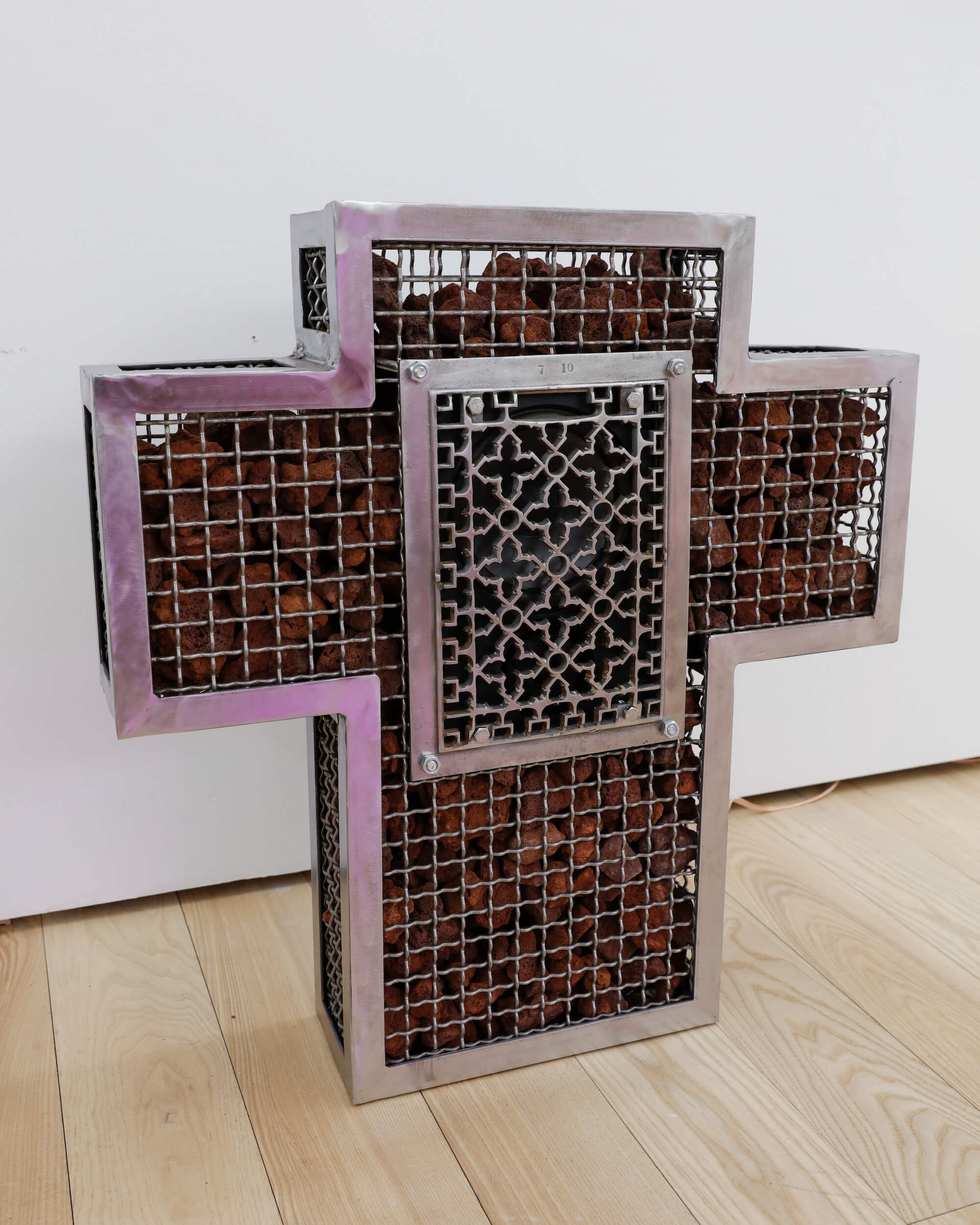
Do you have any upcoming projects you can share with us?
I’m part of a group show of Mexican and Mexican American artists curated by Aida Valdez and Lorena Ramos that opens September 7, 2022 at 188 Allen St., New York.
Interview Conducted by Milo Christie
